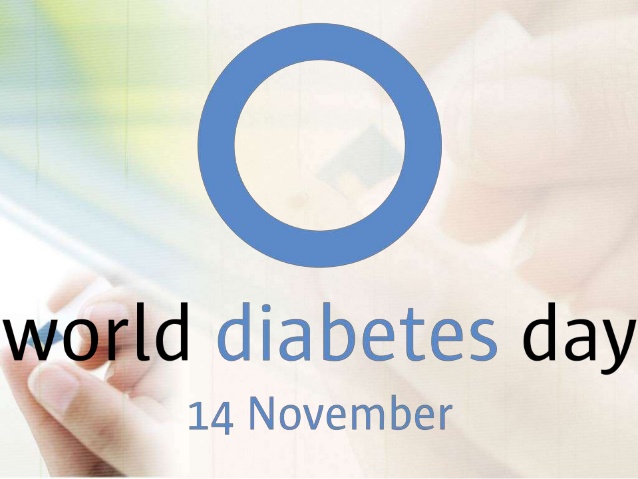14 November 2015: World Diabetes Day
In 1991, he was celebrated for the first time, he has been since 2007, the second official day of the UN (after the World AIDS Day), who has a disease on the topic: the World Diabetes Day. He is every year a special motto – this year’s central theme is “Healthy Living with Diabetes”.
 The term “diabetes mellitus” comes from the Greek and means “honey-sweet flow”: Do not treat one disease, sugar is excreted in the urine. Its sweet taste was formerly used as a diagnostic method. Diabetes is a chronic metabolic disorder associated with increased blood sugar levels – accompanied – also called hyperglycemia. In healthy people, the blood sugar levels in the fasting state is less than 100 milligrams / deciliter (mg / dL) after meals and increases to a maximum of 140 mg / dL. Higher values may be due to the condition of diabetes. Two variants of metabolic disorder are particularly common: In type 1, a lack of insulin is (the most important hormone of glucose metabolism) ago – even children and adolescents can suffer from them. Type 2 is characterized by insulin resistance: The sensitivity of the body’s cells to insulin is reduced. During this second form was once considered adult-onset diabetes, children are already suffering: Possible causes are poor diet and overweight.
The term “diabetes mellitus” comes from the Greek and means “honey-sweet flow”: Do not treat one disease, sugar is excreted in the urine. Its sweet taste was formerly used as a diagnostic method. Diabetes is a chronic metabolic disorder associated with increased blood sugar levels – accompanied – also called hyperglycemia. In healthy people, the blood sugar levels in the fasting state is less than 100 milligrams / deciliter (mg / dL) after meals and increases to a maximum of 140 mg / dL. Higher values may be due to the condition of diabetes. Two variants of metabolic disorder are particularly common: In type 1, a lack of insulin is (the most important hormone of glucose metabolism) ago – even children and adolescents can suffer from them. Type 2 is characterized by insulin resistance: The sensitivity of the body’s cells to insulin is reduced. During this second form was once considered adult-onset diabetes, children are already suffering: Possible causes are poor diet and overweight.
Incidence and sequelae.
According to the latest survey by the International Diabetes Federation (IDF) from the year 2007, approximately 246 million people with diabetes worldwide; 50 million of them live in Europe. 2012 led the national National Health Survey by a representative sample within the population between 18 and 79. It was found that about 7.2 percent of Americans suffer from undiagnosed and at least 2.1 percent below have diabetes. If the metabolic disorder is not treated over the years, a substantial normalization of blood glucose remains so from threatens a number of dangerous complications. Any changes in the vessel walls promote cardiovascular diseases such as heart attacks or strokes. Also diseases of the eye, kidney and nerve disorders as well as the so-called diabetic foot are the possible consequences of diabetes.
Symptoms and treatment of diabetes.
While the type 2 diabetes often asymptomatic runs and is usually discovered incidentally in the context of cardiovascular studies to type 1 often makes the following signs noticeable:
- Frequent urination
- Strong thirst
- Dry / Itchy skin
- Fatigue
- Weight loss
- Poor wound healing
- Susceptibility to infection
In light of the increased risk for dangerous complications is a major goal of therapy in the prophylaxis precisely this damage. If a type 1 diabetes before, the lack of insulin is replaced. Type 2 can often be improved by weight loss, adequate nutrition and increased physical activity. Only if these measures do not achieve the desired results, the use of oral antidiabetic agents or insulin therapy is needed. Dietary supplements, such as on the basis of cinnamon, or specially tailored to the specific needs vitamin supplements can complement the treatment. The skin care plays a major role.